The majority of today’s blog entry is written by the students. You can see the work of the four groups below. They have spent the day in Venice, a coastal resort area of the city which is known globally and pejoratively as the place where Southern Californian weirdness finds its full expression. It’s where one goes to get fit, get tanned, get colonic irrigation, acupuncture, crystal healed, educated in radical new age philosophy, get petitions signed, skateboard, rollerblade, jog, etc. etc. For a city which is quite privatised, Venice serves as a space in which one can unwind at the weekend.
The students have been set a series of ethnographic research tasks to explore the ways in which the district defines itself. All groups have been asked to explore the ways in which Venice presents itself in the local media and other forms of representation, through tourist facilities, architecturally and so on. They are also looking at whether there are signs of an independence (or incorporation) movement in the district – in other words whether there is a campaign to establish Venice as a separate city with the county Los Angeles. This campaign has been active since the 1950s but is a very different movement to that which incorporated other cities in the region. In addition, they have also been asked to look for signs of conflict over gentrification – something that has been affecting the district since the 1970s.
The four groups of students have then been assigned four different tasks: group one is exploring the district’s local heritage industry; group two has been tasked with assessing the New Age movement; group three is mapping the various forms of Californian body culture that find expression in the area; and group four is exploring the local economy.
Group 1: Rhys, Hannah, Polly, Charlie, Karen, Jakob, Scarlett
The representation in Venice Beach’s tourist facilities was one that focused on bodies and sexualisation as it was all about personal appearance. All the clothing that was on sale in the area was either referring to the wearers body and praising it or it was about Venice Beach or LA. It gave the impression of being incredibly self-centred and self-glorifying.
In terms of local media, there was the Argonaut which focuses on Venice includes sections about the local community which looked at homelessness as well as reopening shops after COVID. There’s also a section on food and drink which looks at places in the local area and advertises them. There was also a free magazine available which looked at expensive real estate in the area which further exemplifies the fact the area has been gentrified completely as the prices were so expensive.
The concept of ‘Free Venice’ seems like a dated term to some locals, one vintage shop owner believes that whilst they are trying to keep Venice independent from the rest of LA, it is very difficult to maintain hope for many local businesses.
Whilst prices skyrocket and local businesses struggle, the notion to save Venice has been reduced to near complacency in reaction to change. This acceptance has come from riots and the destruction of homes around 20 years ago where residents where trying to get rid of big corporations such as Google but they no longer want the violence in the area so this has been eradicated from the area and locals say Venice is the most peaceful it has been in the past 10 years. The locals are welcoming of local businesses as that fits in with the idea of the original Venice and they are more than accommodating of spending their money in these businesses however, they are stating they are struggling to keep doing so as they are expensive and they sometimes cannot afford the prices (shops are now designer e.g. a sunglass shop selling shades of £1000 upwards).
The restoration of these new buildings has very bright and vibrant colours where the newly restored homes show a strong difference from the old and the new shops are very modern, stylish and internet worthy and drag away from the old style Venice architecture that was originally implemented in the area.
We spoke to several business owners who said that 90% of businesses on Abbot Kinney
Boulevard were independent. Businesses that were not independent — like RayBans, Adidas, and Aesop — had ensured their storefronts were not garish and were in line with the surrounding architecture. Freddie’s Flowers, a British business, has chosen Venice as their first place to expand their business in the United States — highlighting the presence of gentrification and independent businesses in Venice. Some independent storefronts said that the stores were moving location, potentially due to high commercial rent as a result of gentrification. Most business owners were satisfied with gentrification and knew the local residents, but were potentially part of the wave of gentrification sweeping through Venice.
We saw murals of scientists and the founder of Venice, Abbot Kinney. The main street in Venice that stores and food places are on is called Abbot Kinney Boulevard.
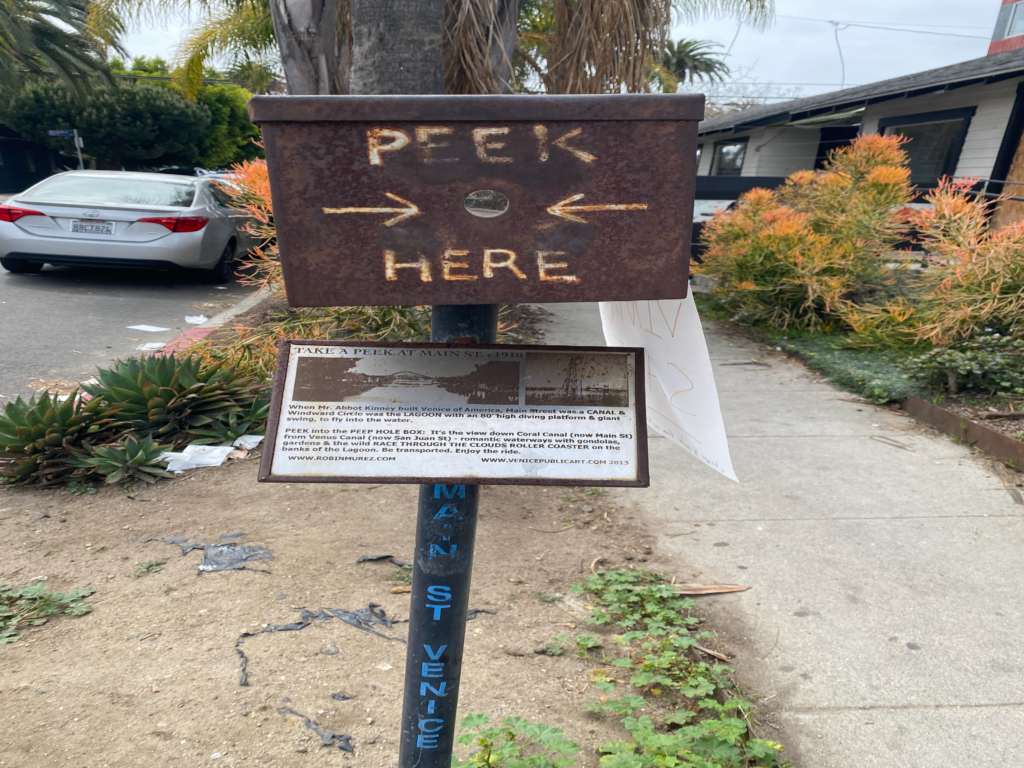
Kinney’s canals were built over, but have later been uncovered. There are peek boxes around Venice that allow people to see streets before modern development. On Venice Beach, there is a metal structure that spells out A-K (for Abbot Kinney).
Group 2: Kitty, Kam, Maddy, Osian, Vicky, Bhavika, Noah
Predominantly the media has represented Venice accurately. The culture surrounding enhancing mind and body is evident. There is a strong sense of self-awareness, both spiritually – the ‘hippy’ population (relating to The New Age)- and physically (those who frequent Muscle Beach and partaking in other physical activities, such as running, cycling, skateboarding and swimming). The media fails to illustrate the prevalence of the LGBT community. Venice is shown to be welcoming towards those marginalised people. The local shops along the boardwalk primarily cater towards tourists. They are rather low market which is a stark contrast to the other shops in the area. Beyond the boardwalk, into
downtown Venice, shops’ target demographic is wealthy, young professionals. The demographic appears to be somewhat mixed – along the beachfront there are ethnic minorities and homeless populations, while young, white, wealthy individuals frequent the rest of Venice. There are suggestions of an enclosed community; individualists.
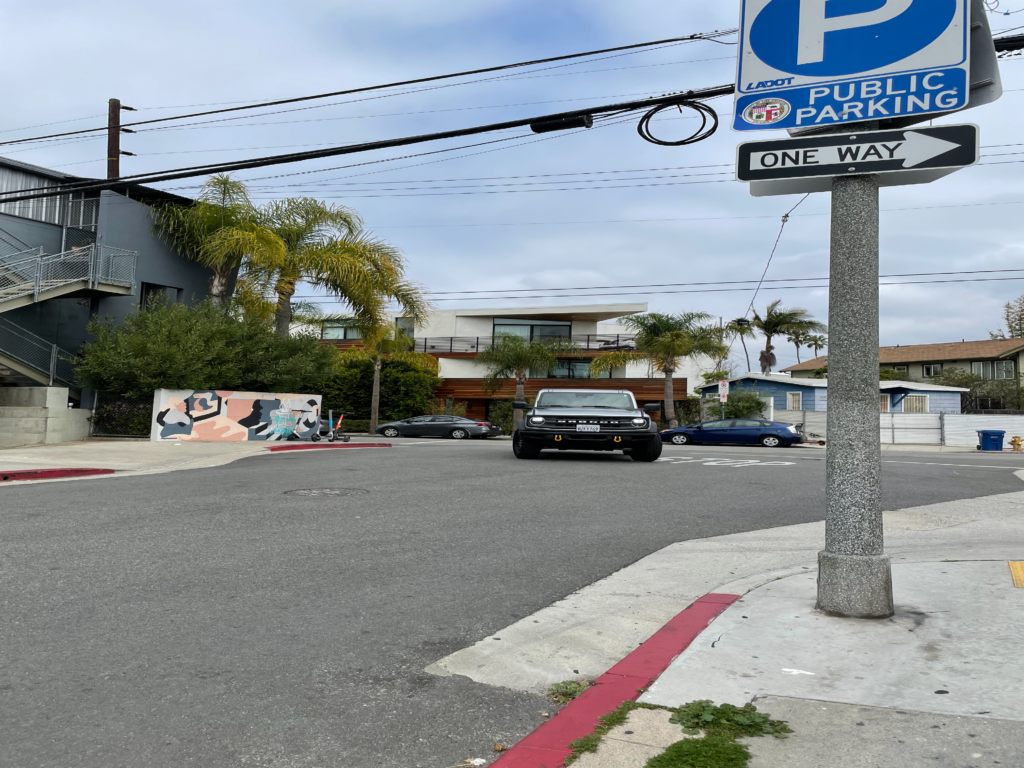
There is shown to be a lack of evidence to suggest a ‘Free Venice’. The continuing challenges to remain independent from the city are therefore apparent. For example the prevalence of certain chains, most notably Starbucks, the uniqueness of Venice is at times challenging to observe. It has inevitably fallen victim to globalisation, and the subsequent emergence of ‘clone towns’. There is an assortment of old and new houses, indicating gentrification occurring. Having spoken to some locals, there is a strong sense that the long term residents are ‘confused’ by the concept of leaving.
There is strong evidence to illustrate this process occurring, despite resistance. There has been drastic changes occurring over time. The area originally was recognised as artistic, but locals argue the extent of this is no longer present. Key examples that suggest gentrification include the following:
• Supposedly high quality stores; ethically and environmental conscious
• Higher end cars
• Branded stores, e.g. Lululemon
• Beautification
• High-end veganism
• Presence of the ‘health tax’
• High-end dispensaries
• House renovations
• Manual labour of which is provided by Hispanic populations
• Surplus of schools
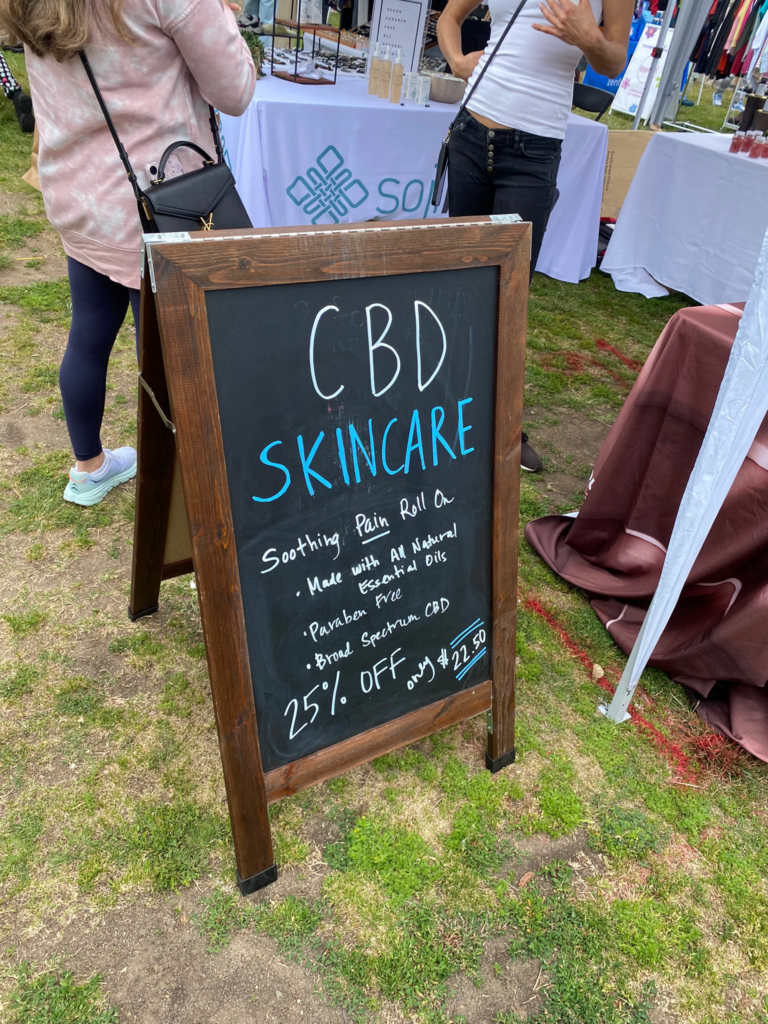
The New Age, which is reminiscent of the 60s, is present with psychic readings, crystals, zodiac related goods and cannabis available for purchase. The Beatniks culture is also visible. Correlation between Brighton and Venice is evident, most notably, the inclusivity of the LGBTQ+ community, skating culture, and the spatial element of fashion (the style is unique to the area).
Group 3: Lizzie S, Morgan, Lizzie H, Dom, Maddie, Rose
Along the Venice Beachfront, also known as ‘boardwalk’, you come across a wide variety of street shops and tourist shops. There are many selling items that could be considered souvenirs with Venice/Los Angeles logos. There are multiple clothing stores aimed at tourists, as well as stores selling masks, tattoos, food, marijuana, surf lessons, or skateboards. There was no shortage of eateries, however, was less typical to find sit-down restaurants and most were takeaway. A 5-minute walk from the beach front, you find hotels and more restaurants, but also supermarkets, a post office, and a bank. There is an almost juxta-positioning of unhealthy restaurants on the beach front facing the recreational sports spaces which had one protein shake shop in the space. The area is presented as relaxed and as an artistic community with multiple murals displayed through the streets eastward and towards more gentrified areas such as the canals. On the boardwalk, it is common to be approached by local artists selling CD and promoting their music.
Travelling eastward into Venice, we encountered more homelessness with tents sprawled together and along the sides of pavements. After speaking with locals of the area, we discovered that a year ago there were more homeless people and expressed how little there are now even though we still passed big groups of tents. The location of the homeless was right beside the canals and Venice Boulevard, seen by anyone driving in and out of Venice making it seem that homelessness is being ignored while people drive passed them. This homeless population, we assume, has been relocated to Skid Row.
Free Venice Beachhead is an underground newspaper that has been run by volunteers since 1968. Claiming to be the paper of the community, the paper focusses on local issues and includes photos, drawings, letters, poems, cartoons and adverts from local people and organisations. It is also involved in local politics – a recent article titled ‘Will Black Lives Matter this VNC Election’ published in May 2021 highlights the importance of certain issues to residents of the Venice neighbourhood, particularly the black and brown community, who are encouraged to vote for Brian Averill due to his ability to work with ‘all sectors of the Venice community’.
Gentrification of housing
Homes in the traditional style are bungalow style. Around the canals there are some very large and modern looking homes which tie into the gentrification affecting the area. They are near the seafront and must be very expensive. Lots more greenery than other places we’ve visited, but not as manicured as Orange county for example. Lots of flowers, plants bushes and grass. These all need watering, unlike cactuses which likely are native to the area.
- The canal water wasn’t very clean, and you wouldn’t be able to swim in the water as it is also very shallow, but there are small boats parked on the canals to enjoy the space. The little wildlife that existed was made up of ducks.
- Homes along the canal side all have security cameras, and we witnessed a security guard cycling through the area. So even though it is a difficult area to access, it is such a prestigious area that security will find a way to get around. Most homes had BBQ’s and outdoor seating areas to enjoy the outdoor lifestyle, many homes also had lemon trees, linking to the famous citriculture of the region.
- Just past the canals, towards the Marina there are more high-rise buildings, which according to a local are much newer to the area.
Local woman has been living in her home for 9 months, prior to living in West Hollywood, she moved to be closer to the beach because she loves it. Her one storey bungalow home she says is local to the area, maybe built around the 1900s, and repainted in a fun colourful style 2 years previously.
Body Culture and Sports:
Venice beach hosts large sports facilities as a part of the recreational centre including multiple basketball courts, an open – air gym (muscle beach), a skatepark and a plethora of other activities for all to enjoy.
Venice beach hosts 4 full size basketball courts and a further basketball court with stands for spectators. This hosts an integral part of the wider beach front with locals forming teams often 3 a side in a pick – up style format with a rotation in teams. Furthermore, Venice beach hosts its own basketball league on these courts known colloquially as the VBL. Immense competition and skill is demonstrated both in the league and the pick – up games, in which Venice beach is regarded as one of the best streetball courts in the world. A local resident describes this saying “playing out on the beach is a really unique thing it’s a different style of play as you are playing against the wind on a court that is designed for drainage”.
The variety of players on the court varies with all skillsets, ages and body – shapes welcome to play. This encompasses a feeling of community through competition although the games can be taken incredibly seriously. The age range was on display on our visit in which older people were seen playing at a high intensity even with those younger than them.
Muscle Beach has an open gym which requires a pass and membership for entrance to the gym, with a day pass at $10. Muscle beach has hosted notable figures such as Arnold Schwarznegger and members often use this gym. With incredible athleticism and strength on display this is not considered a suitable environment for the regular human. In the open gym we got speaking with a somebody who is a stunt double, showing the intertwining of many people in Hollywood. Being a stunt man involves working outside of regular hours, so he can come down to the beach any time, and also ties into the industries which attract many people to LA.
While the basketball games were high in intensity, all types of players were welcomed, whether they were older and not as skilled and also wearing whatever clothes they wanted. Meanwhile, only the most intense and hardcore are ‘permitted’ into muscle beach, where appearance is everything. This highlights the contrast between the two different communities in such a tight and confined area.
Group 4: Lily, Louka, Grace, Keir, Lucy, Anne-Claire
Venice Beach showed little signs of gentrification yet had a variety of similar shopfronts, selling merchandise and tourist mementos. The front seemed quite rundown and functioned mostly for tourists and day guests, providing your typical seafront experience with a fitness and leisure attraction. The main street “Abbot Kinney” provided more independent looking shops and restaurants yet was clearly gentrified and made for middle class young professionals with boutique stores, markets, and health food cafes.
There weren’t many signs of a continuing struggle for independence from the city, although we saw a piece of graffiti street art that alluded to the “free Venice” cause. Apart from one Starbucks, there weren’t many chain companies in the area, showing the community’s anti-corporate sentiment.
The Venice economy seems to function off independent stores and retail and played into the pre-conceived ideas of Venice and the type of economic activity. Whilst walking around we saw many people who appeared to be part of an underground scene and went against consumerism and mainstream culture, this tied into what we previously learnt about Venice. This also is a sign of Venice’s independent spirit and anti-corporate ideals. Along the beachfront, there were many small artist and experience stalls (tarot readings and crystal shops) these were run by local struggling artists and seemingly homeless people.
Although Venice is free-spirited, it was clear how the stores selling “hippie” clothing were gentrified and only appealed to the richer people in the area and didn’t cater to any of the community with lower incomes.
Furthermore, the street art and graffiti showed a sense of pride within the Venice community with the word “Venice” being printed on the side of buildings and in artwork around the area. Although this may also be for tourist and social media promotion.
We also noticed different types of people in different areas of Venice. Along the seafront, there were more of the “free-spirited” and “Beatnik” individuals who wore different styles of clothing and lived a more casual lifestyle. However, around the boutique areas, there were more smartly dressed millennials who seemed more corporate focused. This gave a feeling of hypocrisy that they were living in a “hippie” and an “independent” area yet paying high prices for designer clothing and health foods which seems the opposite of the economic sub-culture that used to exist there.









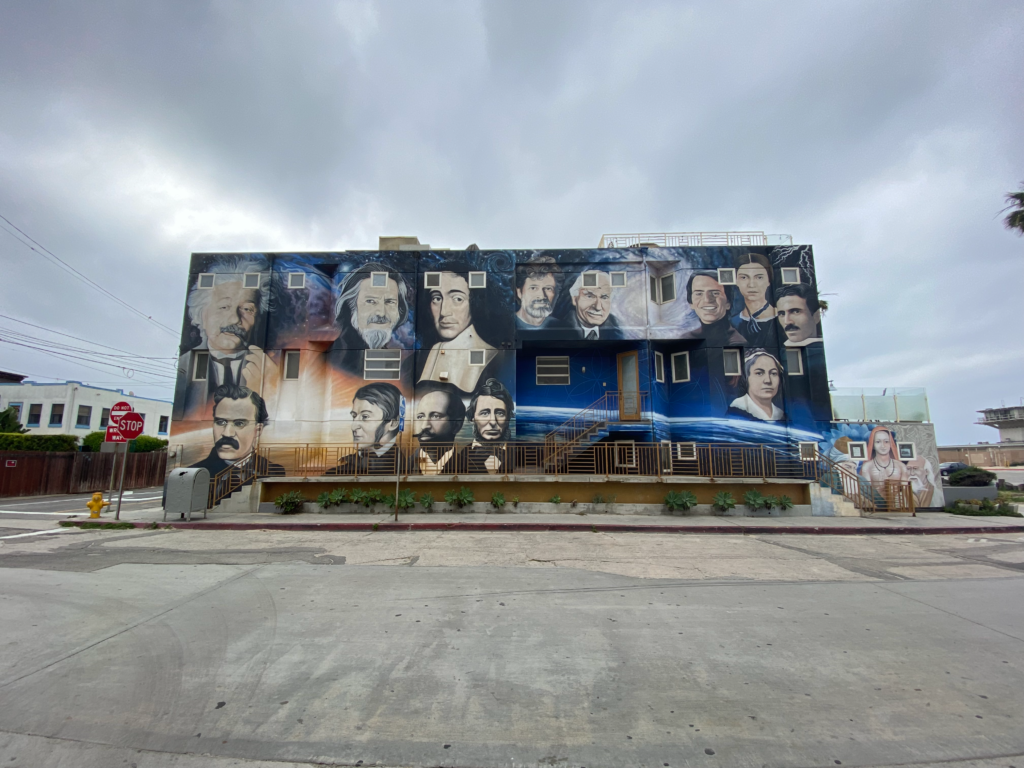
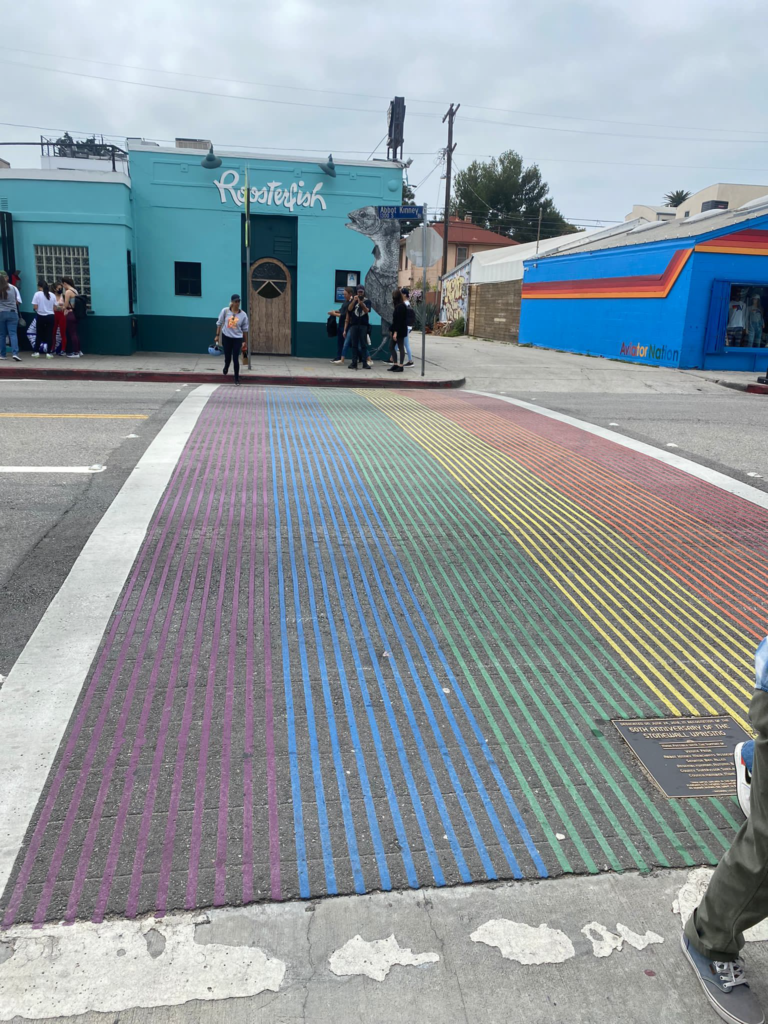
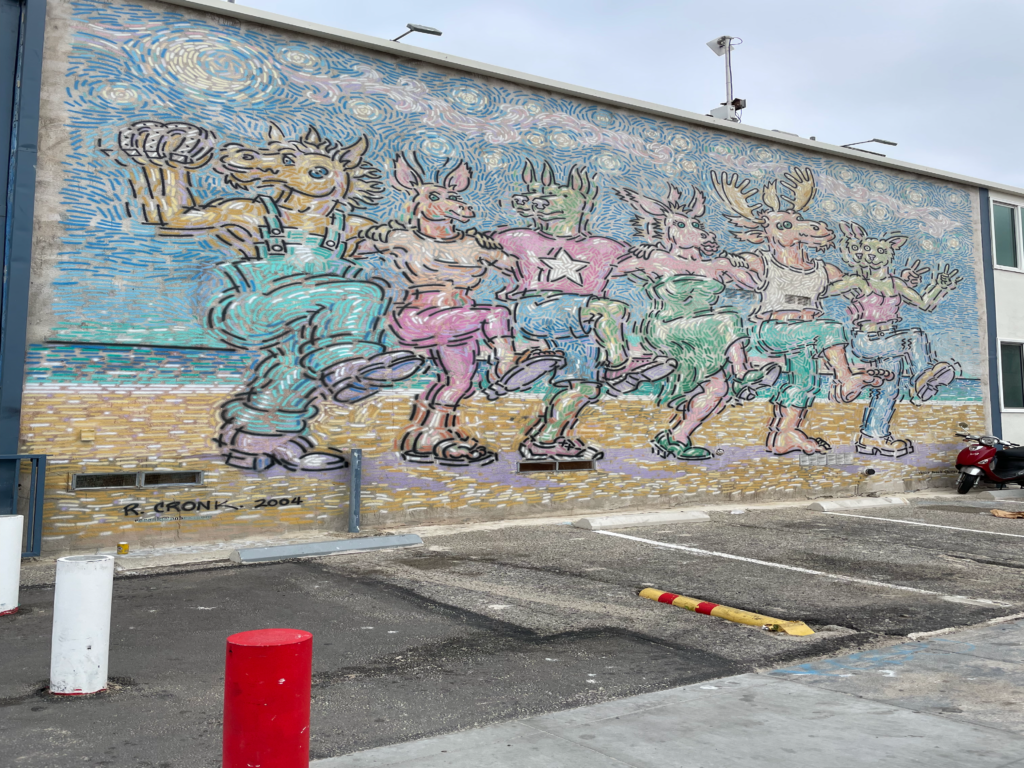












Leave a Reply